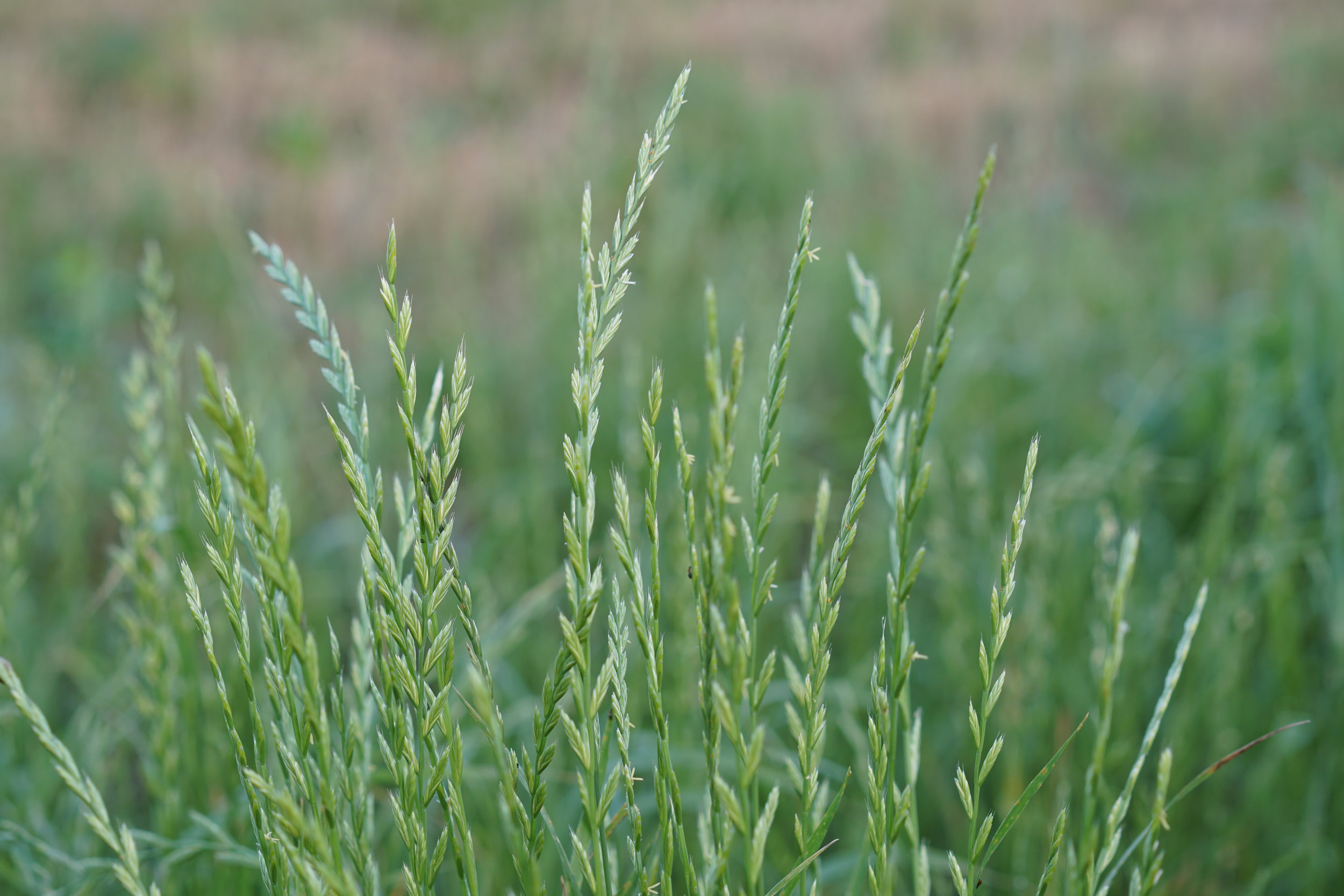Lolium perenne (Perennial ryegrass)
Cool season, short-lived, perennial bunchgrass adapted to a wide variety of sites where moisture is adequate. Establishes quickly and easily. Excellent palatability for use in pasture and range improvement blends; also extensively bred as a turf. Tetraploid types are more vigorous, digestible, less stemmy, have excellent regrowth and should be used for pasture and hay. Diploid types have finer leaf blades, tiller more aggressively and are developed as turf. Popular choice for winter over-seeding of dormant warm season Bermudagrass (Cynodon dactylon) lawns in the south and southwest. Varieties listed below.
DISTRIBUTION / ADAPTATION
INFORMATION & ATTRIBUTES
Family: Poaceae
Duration: Perennial, Short-lived
Growth Habit: Graminoid
Native Status: Introduced
Season: Cool
Growth Form: Bunchgrass
Mature Height: 36-42 in.
Annual Precipitation: 30-65 in.
Drought Tolerance: Low
Shade Tolerance: Intolerant
Elevation:
Fire Resistance: No
Fire Tolerance: Low
SOIL ADAPTATION
Coarse Texture: No
Medium Texture: Yes
Fine Texture: Yes
Salinity Tolerance: Medium
CaCO3 Tolerance: High
pH Range: 5.0-8.0
SEEDING NOTES
Seeds per Pound: 240,400
Seeding Rate: 20-25 PLS lbs/acre
Season: Spring/Fall
Days to Germination:
VARIETIES
Albion - Superior for pasture, hay and silage. Excellent performance in areas that experience drought or high humidity. Notable drought tolerance for a ryegrass.
Linn - Commonly used for erosion control, naturalized areas and basic pasture; unsatisfactory turf. Productive early in the growing season. (Released 1961)
Various turfgrass types are also available. If you are looking for turfgrass varieties, please contact us.


